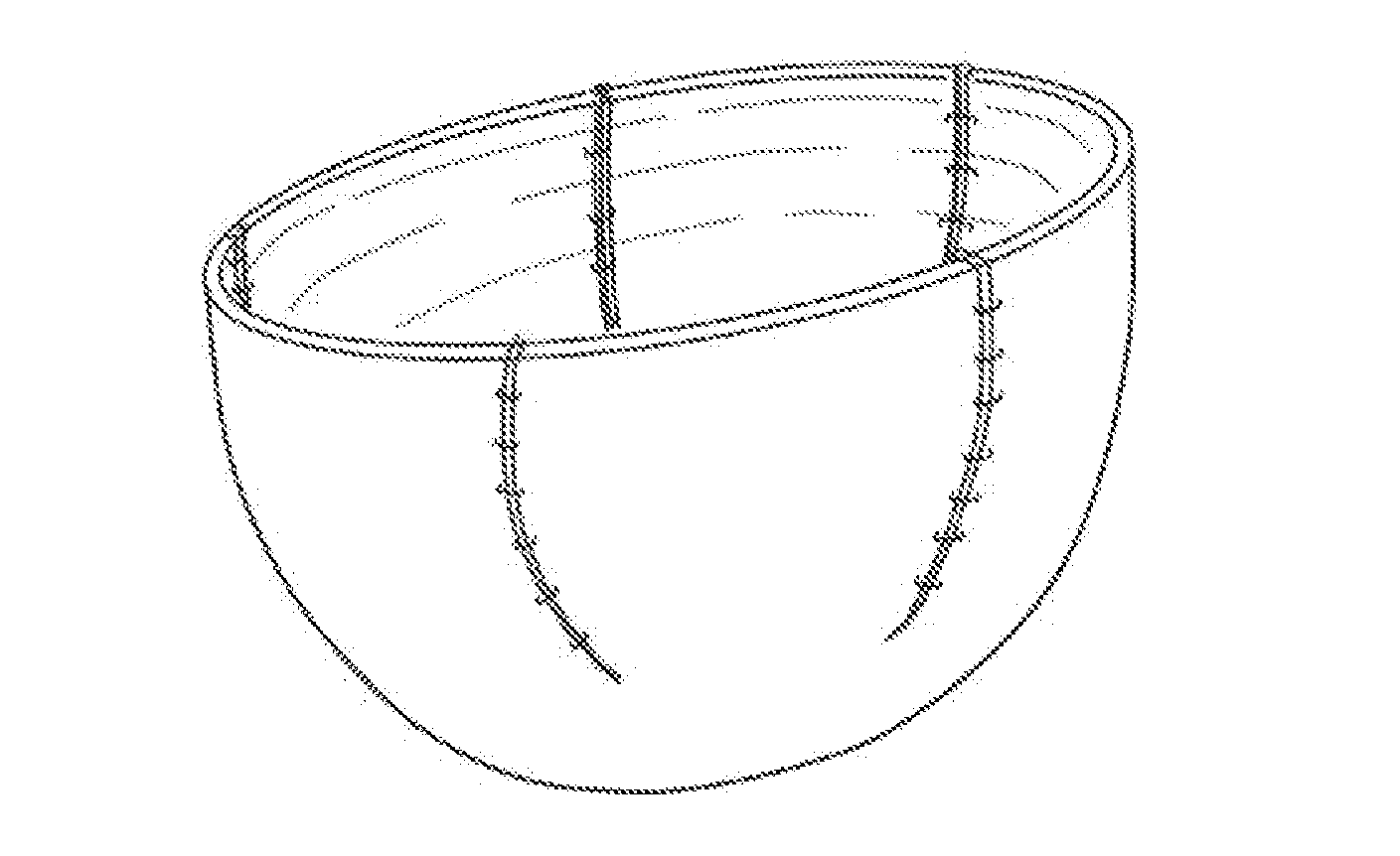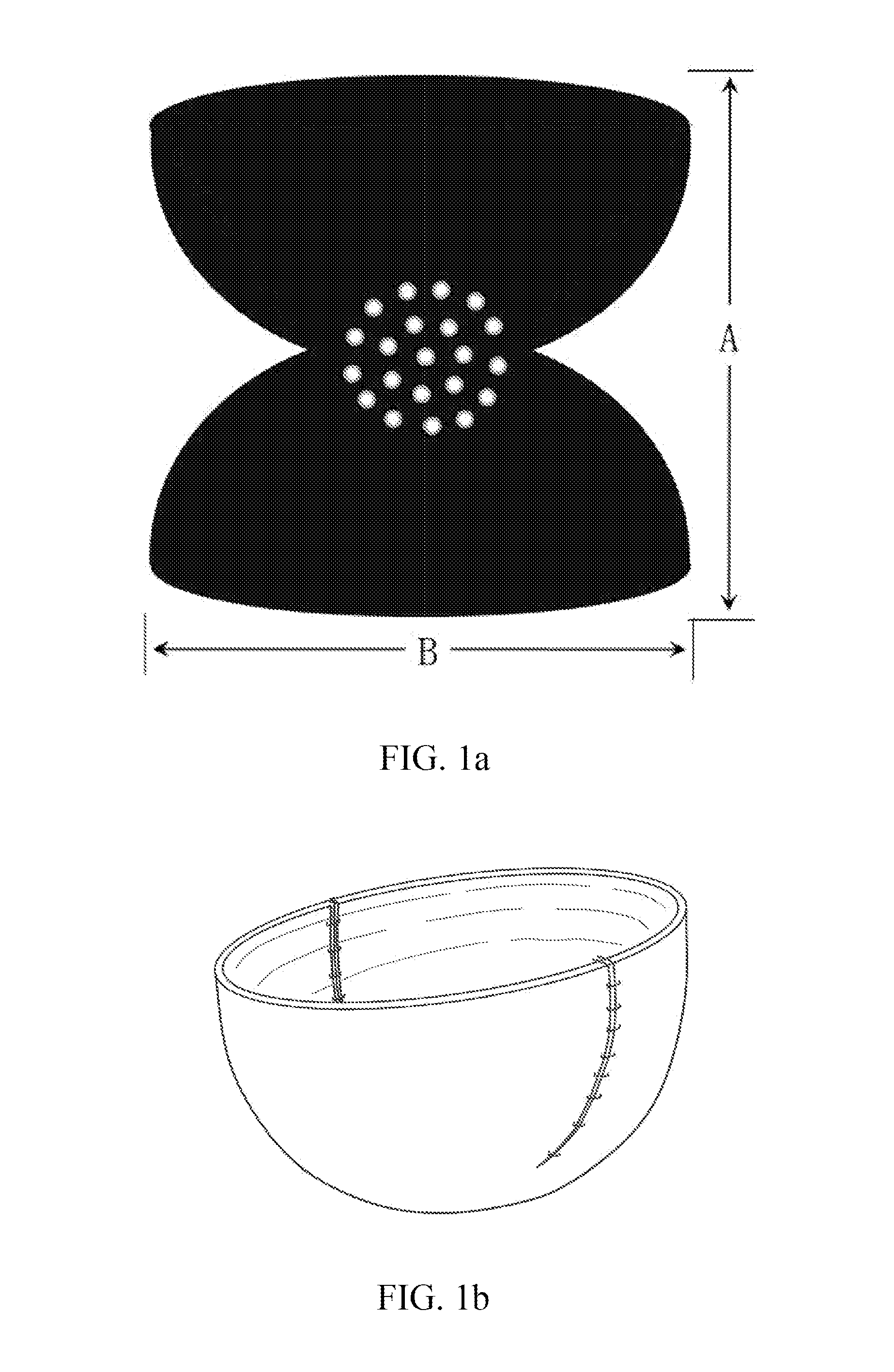Breast Prosthesis Support Device Based on Tissue Matrix Material, and Preparation Method Therefor
a technology of tissue matrix material and support device, which is applied in the field of plastic surgery, can solve the problems many serious problems, and unsatisfactory aesthetic effects, and achieve the effects of improving aesthetics, reducing the risk of breast prosthesis rupture, and improving the quality of breast prosthesis
- Summary
- Abstract
- Description
- Claims
- Application Information
AI Technical Summary
Benefits of technology
Problems solved by technology
Method used
Image
Examples
example 1
[0059]Fresh pericardium was collected from a newly slaughtered bovine. After the attached adipose tissue being stripped manually, the fresh pericardium was temporarily stored in a 0.9% sodium chloride solution and kept in a refrigerator at 4° C. overnight. After being washed in ultrasonic water bath for 30 minutes, the thickness of the pericardium was measured as 0.4˜0.7 mm. Each of 100 g of the pericardium material was decellularized with 1 L of 2% sodium deoxycholate solution (which was dissolved in a buffer solution of hydroxyethylpiperazine-ethanesulfonic acid containing 10 mM ethylenediamine tetraacetic acid, with the pH of 7.4), and shaked and washed in a rotary shaker for 16 hours. The decellularized pericardium was placed in 1 N sodium hydroxide solution to be treated for one hour. The pH was adjusted to be neutral with 10 N hydrochloric acid. Then, it was treated with a 12% sterile sodium chloride solution for 6 hours, and washed with a 0.9% sterile sodium chloride solution...
example 2
[0060]The decellularized bovine pericardium having a thickness of 0.6˜0.9 mm, a length of 20 cm, and a width of 16 cm was used. The pericardium was tailored into petals with two kinds of different sizes and shapes as shown in FIG. 3a, in which two petals have a width of 9 cm and a height of 7 cm, and the other two petals have a width of 7 cm and a height of 9 cm. 16 holes having a diameter of 3 mm were perforated in a region where the four petals were connected to each other, with a space between the holes of 1 cm. After the convex edges connected between the petals being stitched with polypropylene sutures together, a flat bowl cover or cup cover of a biological tissue having a caliber of about 9 cm and a height of about 7 cm was formed (see FIG. 3b). Once being stitched, it was washed with 0.9% sodium chloride solution; and then was sterilized using 25 kGy gamma ray after being packaged. The device can support breast prosthesis at sizes between 250 cc and 450 cc, and cover about 1...
example 4
[0062]A decellularized porcine dermis having a length of 16 cm, a width of 16 cm, and a thickness of 0.9˜1.1 mm was used. It was tailored into three petals having a width of 9 cm and a height of 7 cm as shown in FIG. 2a. 16 holes having a diameter of 3 mm were perforated in a region where the three petals were connected to each other, with a space between the holes of 1 cm. After the convex edges connected between three petals being stitched with polypropylene sutures together, a flat bowl cover or cup cover of a biological tissue having a caliber of about 9 cm and a height of 5 cm was formed (see FIG. 2b). Once being stitched, it was washed with 0.9% sodium chloride solution; and then was sterilized using 25 kGy gamma ray after being packaged. The apparatus can support breast prosthesis at sizes between 250 cc and 350 cc and cover about 150 square centimeters of the surface of the breast prosthesis.
PUM
 Login to View More
Login to View More Abstract
Description
Claims
Application Information
 Login to View More
Login to View More - R&D
- Intellectual Property
- Life Sciences
- Materials
- Tech Scout
- Unparalleled Data Quality
- Higher Quality Content
- 60% Fewer Hallucinations
Browse by: Latest US Patents, China's latest patents, Technical Efficacy Thesaurus, Application Domain, Technology Topic, Popular Technical Reports.
© 2025 PatSnap. All rights reserved.Legal|Privacy policy|Modern Slavery Act Transparency Statement|Sitemap|About US| Contact US: help@patsnap.com



